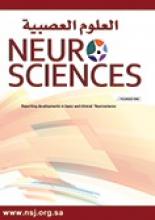Article Figures & Data
Tables
- Table 1
Distribution of the polysomnography patients according to their demographic-socio-cultural backgrounds.
Variable No (%) Age, median (min-max) 49.0 (18-71) Income, median (min-max) 1300 (400-9000 TL) Gender Male 119 (52.0) Female 110 (48.0) Educational status Illiterate-Literate 20 (8.7) Primary School 69 (30.1) High School 87 (38.0) University 53 (23.2) Marital status Single 18 (7.9) Married 211 (92.1) Resident in City 146 (63.8) District 61 (26.6) Village 22 (9.6) Employment Yes 145 (63.3) No 84 (36.7) Profession Worker 70 (30.6) Government employee 56 (24.5) House wife 52 (22.7) Self-employed 42 (18.3) Other (student, farmer) 9 (3.9) Smoking Yes 73 (31.9) No 156 (68.1) Alcohol Yes 17 (7.4) No 212 (92.6) Chronic disease Yes 101 (44.1) No 128 (55.9) Scales Median (min-max) PSQI Global 7 (1-19) BDI total 11 (0-47) Physical field- WOQOL-BREF 57.1 (7.1-96.4) Mental field- WOQOL- BREF 54.2 (12.5-95.8) Social Field - WOQOL- BREF 58.3 (0.0-100) Environmental Field -WOQOL- BREF 59.4 (31.3-96.9) Environmental Field -TR WOQOL- BREF 61.1 (27.8-97.2) Variables PSQI P-value Good n (%) Bad n (%) Age* n=90 46.2±11.6 n=139 50.8±11.8 0.004 Income# n=74 1300(1000-2455) n=117 1635(940-2200) 0.601 Gender Male 49 (41.2) 70 (58.8) 0.546 Female 41 (37.3) 69 (62.7) Marital Status Single 13 (72.2) 5 (27.8) 0.006 Married 77 (36.5) 134 (63.5) Educational Status Illiterate-Literate 4 (20.0) 16 (80.0) Primary School 31 (45.0) 38 (55.0) 0.217 High School 36 (41.0) 51 (59.0) University 19 (36.0) 34 (64.0) Resident in City 7 (32.0) 15 (68.0) 0.741 District 25 (41.0) 36 (59.0) Village 58 (40.0) 88 (60.0) Employment Employed 64 (44.0) 80 (56.0) 0.038 Non-Employed 26 (31.0) 59 (69.0) Profession Worker 34 (49.0) 36 (51.0) Government employee 18 (32.0) 38 (68.0) House wife 15 (29.0) 37 (71.0) 0.119 Self-employed 18 (43.0) 24 (57.0) Student 3 (75.0) 1 (25.0) Unemployed 2 (50.0) 2 (50.0) Chronic Disease Yes 28 (28.0) 73 (72.0) 0.001 No 62 (48.0) 66 (52.0) Depressive Symptom Level None 48 (58.5) 34 (41.5) Mild 33 (37.5) 55 (62.5) <0.001 Moderate 9 (18.0) 40 (82.0) Severe 0 (0.0) 10 (100) WOQOL-BREF Physical field 14.7±2.1 11.9±2.4 <0.001 Mental field 13.9±1.9 12.1±2.4 <0.001 Social Field 13.4±2.3 11.9±2.7 <0.001 Environmental Field 13.8±2.1 13.0±1.8 0.003 Environmental Field -TR 14.0±1.9 13.3±1.8 0.002 - Table 4
The correlation among sleep, quality of life, and depressive symptom level scores among polysomnography patients.
Scales PSQI Global Rho Total Rho Physical Field- WOQOL-BREF Rho Mental Field- WOQOL- BREF Rho Social Field- WOQOL- BREF Rho Environmental Field WOQOL-BREF Rho Environmental Field–TR WOQOL-BREF Rho PSQI Global 1 0.439** -0.572** -0.458** -0.361** -0.262** -0.293** Total 1 -0.597** -0.612** -0.281** -0.300** -0.350** Physical Field- WOQOL-BREF 1 0.714** 0.383** 0.403** 0.431** Mental Field- WOQOL- BREF 1 0.363** 0.475** 0.512** Social Field- WOQOL- BREF 1 0.396** 0.382** Environmental Field- WOQOL- BREF 1 0.964** Environmental Field-TR WOQOL- BREF 1 ↵** p<0.01,






